
What kind of person becomes an ichthyologist (a scientist who studies fish)? Meet Melanie Stiassny , the curator of fishes at the Museum. Find out how she became an ichthyologist and what exactly she does all day.
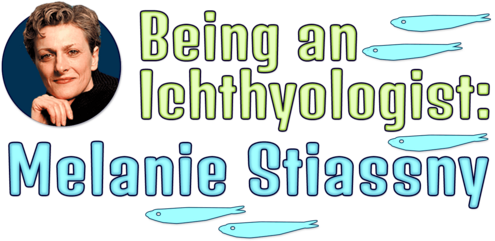
What kind of person becomes an ichthyologist (a scientist who studies fish)? Meet Melanie Stiassny , the curator of fishes at the Museum. Find out how she became an ichthyologist and what exactly she does all day.
1. What first inspired you to get interested in science?
Melanie: I grew up in London but my mom grew up on a farm. She inspired in me a love of animals and plants, anything to do with nature. We had lots of pets, and Mom was a bit of an amateur botanist. When I wanted to learn more about animals, mom took me to the library. My favorite thing was when she would take me to the Natural History Museum – always the biggest treat. The museum filled me with wonder and awe.

Natural History Museum of London
2. Did you like science in school?
Melanie: I loved biology but I was terrible at math. I really couldn't do math at all. Visiting the Natural History Museum got me interested in evolution. A bust of Charles Darwin sparked my imagination. I learned that he came up with the theory of evolution. Then, when I was 8 or 9, I bought a book on evolution. It made me realize that the world could have been very different. I started to question why things are the way they are and thought about how they could be different.
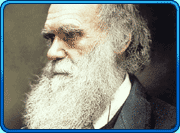
Charles Darwin
3. Why fish?
Melanie: I loved all animals and, more than anything, I wanted to be a veterinarian. Although I had a much-loved pet fish as a child, I could have ended up studying anything. It was pure serendipity that I ended up studying fish. When I graduated from college, I decided to do a Ph.D. I worked with a professor at the Museum of Natural History in London. My professor was a world authority on a family of tropical fish called cichlids .
I had lots of questions about life: Why are things the way they are? What are the forces that drive life? Studying any type of life would have helped me pursue these questions, but I discovered that I could try to answer them by studying fish and so I became an ichthyologist.
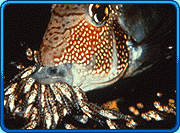
Melanie primarily studies cichlids.
4. How do you do your work?
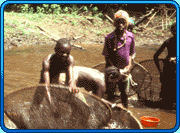
Melanie observed these children fishing
Melanie: Scientists don't know what lives in the water in many parts of the world. I go to remote places and talk to the people who live there. I ask them: What do you catch? I go to markets and look at the fish on sale there. In Africa, and many other places where I work, men tend to catch the fish that are sold to make money, but I pay attention to women and children. They catch the smaller, more obscure fish – the fish that the people themselves eat. I watch the women and girls fish, and I go fishing myself.
5. What do you find out?
Melanie: People catch fish that scientists haven't seen before. I have no idea what these fish are, but local people know. They recognize them – they even have names for them – but the fish are new to science and scientists. I look to see what other animals the fish live with. What do they eat? How do they live? I find out as much about them as possible by observing them and making notes. All this information helps me to build a big picture of what lives in this place.
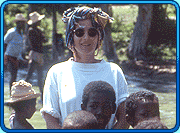
Melanie with local helpers!
6. Who do you work with when you do fieldwork?
Melanie: I take a team made up of other scientists from the Museum, and students. And – very importantly – I always collaborate with people who live there. Sometimes I work with local scientists, or people from government agencies. Often I work with local students. They provide us with a lot of local knowledge and information. In return, we share knowledge of how we carry out scientific fieldwork.
Fishing is a common language; everyone is an expert. Everywhere I go, I meet people who are natural ichthyologists. They know everything about the fish in their environment. Every village knows who these people are. After I'm there for a day or two, they hear about me, and show up. People have phenomenal knowledge.
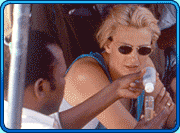
Melanie and local colleague test water samples.
7. Do you like fieldwork?
Melanie: I love it! Nothing compares to waking up in a tent, in the middle of nowhere, three days from the nearest town, surrounded by nature. I trudge through rice paddies and beaches. I get really muddy, and I'm always wet.
Back in the Landrover I need to come up with ways to keep my specimens alive. Are they getting sloshed around too much? I don't want them to die because I want to be able to observe their behavior back in the lab. I enjoy all the challenges, solving all the problems. It makes me feel intrepid!
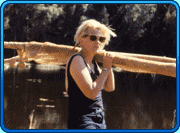
Carrying fishing nets to use in the field
8. How do you know when you've discovered a new species?
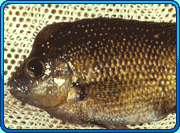
A katria, a new species of cichlid
Melanie: Before I go somewhere new, I do my homework. I read up on all the fish that have been recorded there. I look closely at pictures of them, so that when I get there, I know what to look for. As time goes by, I get more experienced in identifying fish. When I see something completely different, I can feel confident that it might be something that hasn't been described yet by any other scientist. I collect samples of that fish and bring them back to New York.
9. How can you be sure you're the first scientist to discover a species?
Melanie: Back at the Museum, I compare the specimens I've brought back with other fish in our collection. The collection is like a library but, instead of books, it has millions of specimens. When a scientist describes a new species, the specimen is called a "type."
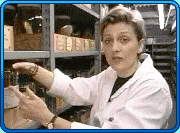
Melanie looking through specimens in the Museum's collection
10. Where are types kept?
Melanie: Types are stored in museum and university collections all over the world. If I don't find what I'm looking for at the Museum in New York, I have to figure out where the type species might be. Sometimes I can borrow the types. Other times I have to travel to different places to study the types. If I can't find one anywhere that matches the fish I've brought back, I get closer to thinking that I've discovered a new species.
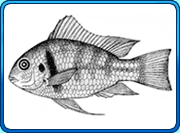
When a scientist describes a new species, the specimen is called a 'type.'
11. What do you do when you think you've discovered a new species?
Melanie: When I've made sure that nothing like it exists in any other collection anywhere in the world, I start to write a description of my fish. I study its anatomy. I make lots of measurements. I count its vertebrae, its fins, its teeth. I examine its gill structure. The things I pay most attention to depend on the kind of fish. I look for different features in salmon, than, say, catfish. I record everything I see.
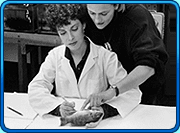
Melanie and a colleague take measurements.
12. Does identifying fish make a difference?
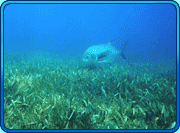
This seagrass meadow is a protected area in the Florida Keys.
Melanie: Certainly! Say I'm studying fish in a lake in Madagascar . I'll compile a checklist of all the fish that live in the lake. Next I'll see if these fish occur in other places in Madagascar. Or in the rest of Africa. Or in India. I start to build up a picture of, not just what this area has in common with other places, but what makes it special.
Governments then use this information to make decisions. If there are a lot of unique fish, the government will probably want to protect this area.
13. Did anyone else inspire you, apart from your mom?
Melanie: When I was a kid I watched a series on television about explorers. One program told the story of a woman called Mary Kingsley who lived over 100 years ago. She led a sheltered life in England, looking after her elderly parents. When they died, she surprised everyone by going to Gabon in Africa. She struggled through swamps wearing huge crinoline skirts and slept in mud huts decorated with human skulls.
Along the way, Mary collected fish samples and sent them back to the Natural History Museum in London. She wrote a great book called My Travels in West Africa.
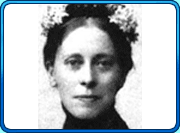
Mary Kingsley
14. Did you have other role models?
Melanie: I met a couple of great scientists when I was a student. One woman, called Rosemary Lowe McConnell, spent many years in Africa and South America and wrote the most important textbooks on tropical fish ecology.
Another woman, called Ethel Wynn Threwavas, was known as "E.T." E.T. knew that I needed to go do some fieldwork, to see animals in context. One day she said to me, "It's time you went to Africa, Melanie!" She handed me a check-it was enough money to pay for my first scientific field trip. As a way to say thank you to E.T., I just named a fish genus-a whole group of fish-after her.
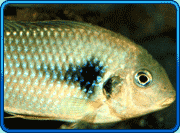
Etia nguti, named after Ethel Threwavas
15. Are you concerned about the state of the oceans?
Melanie: Very! For many years, we've acted like we can use the Earth any way we want. But now we know that's not true. It's like hunting the buffalo to extinction . We can't just keep taking fish out of the sea forever.
The wealthier nations have overfished their own waters, and now they're going to tropical countries and buying up all their fish. People in those countries need money. Instead of eating the fish they catch themselves, they sell them to companies from North America, Europe, and Japan.
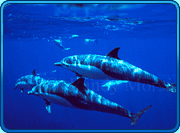
Some fishing nets catch animals, like dolphins , that aren't eaten, but just die.
16. How did the oceans get into such a bad situation?
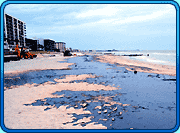
Oil spill on a Florida beach
Melanie: More and more people live by the coast. They take too much out of the ocean and put too much in. The stuff they put in – sewage, oil, fertilizers, and trash – pollutes the ocean. We can't see this as easily as we can on land, but it's just as serious.
We don't even know what the oceans used to be like. By reading stories that people wrote – hundreds of years ago – we learn that there were huge whale migrations and that people saw vast numbers of different species. We've read about it, but we haven't seen it for ourselves.
17. What kind of fish are in trouble?
Melanie: Most fish are in trouble because we're over fishing them. Look at the example of cod. Cod are the passenger pigeons of fish. Passenger pigeons used to fly overhead in flocks that were so huge they took days to pass. People killed them for sport, and suddenly they were extinct. None left. The same thing has happened to cod. They've practically disappeared, and we barely noticed it happening. Sharks, too. In the last 15 years, populations of many sharks have dropped by 75 percent.
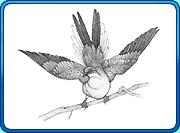
The passenger pigeon went extinct in 1914
18. What can a kid do to help?
Melanie: Learn everything you can about the ocean. You'll realize that you're part of the Earth . We're all part of one great system, and we rely on it for everything we need. It's our responsibility to look after it. The decisions we make will determine what the world will look like in the future. We can all make a difference by being informed.
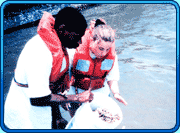
These ocean helpers are restoring a coral reef
19. Is it OK to eat shrimp?
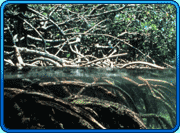
Red mangrove
Melanie: You know, you really can't eat as much shrimp as you want for $2.99 without having an effect on the oceans. Every pound of shrimp caught includes five pounds of other animals, "the bycatch." The bycatch dies when it's caught. Then it's just thrown away.
And forget most farmed shrimp! Mangroves , an endangered group, are one of only two plant groups in the oceans. Many shrimp farms are created by clearing mangroves. People pump shrimp farms full of pesticides and hormones that pollute water. And shrimp are predators-you need to feed them many dead fish as you raise them.
20. Should I eat fish?
Melanie: Of course, but be an educated consumer! An organization called the Marine Stewardship Council (MSC) monitors fisheries to see if they have a good management plan: Do they catch fish in a responsible way, without an enormous bycatch? Do they avoid using nets that destroy the seafloor by pulling up everything? Try to eat fish that come from MSC-certified local fisheries.
Don't eat fish that come from countries halfway round the world. Visit Web sites, like Audubon and the Monterey Bay Aquarium, to read about the fish that are most under threat, and avoid eating them.
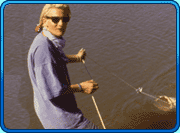
Fishing with a simple net will not harm the oceans.
21. What's the best way to see fish?
Melanie: Use a snorkel and look in any river, pond, estuary, or ocean. You'll see so much if you look closely. Or stand on a bridge over a river and look through a pair of binoculars. You'll see fish spawn, build nests, and do a hundred other things without doing any harm to the environment. You don't need expensive scuba diving gear to observe fish behavior!
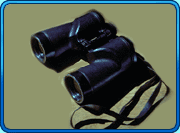
Get a closer view of marine life with binoculars!
Image Credits:
Photos: Natural History Museum, Charles Darwin: courtesy of The Natural History Museum, London; Cichlid and babies, Children fishing, Melanie and helpers, Testing water, Melanie's nets, New species, Melanie and colleague, ET's fish, Melanie fishing: courtesy of AMNH, Melanie Stiassny; Fish collections, Type specimen: courtesy of AMNH; Seagrass meadow: courtesy of NOAA, Heather Dine; Mary Kingsley: courtesy of West African Study, Mcmillian, London; Dolphins: courtesy of Golden State Images; Oil spill: courtesy of NOAA; Restoration Center, Passenger pigeon: courtesy of AMNH, Sharon Simpson; Beach cleanup: courtesy of NOAA; Restoration Research Program; Mangrove: courtesy of OAR, National Undersea Research Program; Binoculars: courtesy of National Park Service




 Biodiversity
Biodiversity
 Brain
Brain
 Genetics
Genetics
 Marine BiOLogy
Marine BiOLogy
 MicrobiOLogy
MicrobiOLogy
 PaleontOLogy
PaleontOLogy
 ZoOLogy
ZoOLogy
 AnthropOLogy
AnthropOLogy
 ArchaeOLogy
ArchaeOLogy
 Astronomy
Astronomy
 Climate Change
Climate Change
 Earth
Earth
 Physics
Physics
 Water
Water
